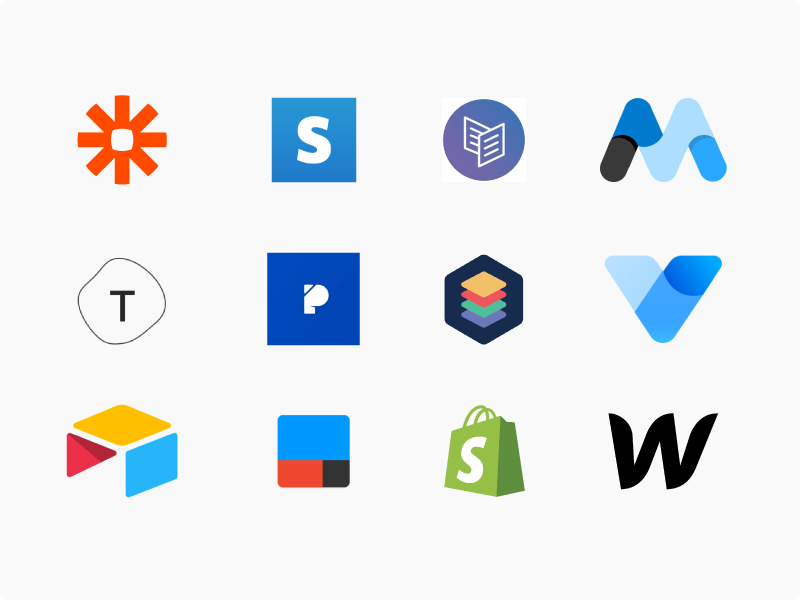Exactly How No-Code Devices Simplify Open System Data Source Creation for Everyone
Exactly How No-Code Devices Simplify Open System Data Source Creation for Everyone
Blog Article
Discover How Scalable Databases Can Be Used Without Coding to Boost Your Service Operations
In today's busy business atmosphere, the capability to handle and evaluate data effectively is extremely important. no-code. Scalable databases, particularly when matched with no-code services, provide a transformative method that equips non-technical customers to simplify operations.
Understanding Scalable Data Sources
Scalable data sources are necessary for contemporary service procedures, permitting organizations to successfully manage boosting quantities of data without sacrificing efficiency. These databases are developed to adjust and grow to the changing needs of a business, guaranteeing that they can take care of bigger datasets and more complicated questions as organizational needs progress.
Understanding scalable databases involves acknowledging their 2 primary types: vertical scaling and horizontal scaling. Vertical scaling, or "scaling up," includes including even more power (CPU, RAM) to an existing web server to boost efficiency. Conversely, straight scaling, or "scaling out," requires including extra web servers to disperse the lots, which frequently causes better adaptability and fault tolerance.
Another crucial facet is the style of scalable data sources, which can be either relational or non-relational. Relational databases, such as MySQL and PostgreSQL, are structured and use SQL for inquiries, while non-relational data sources, like MongoDB and Cassandra, supply even more flexibility with unstructured data.
Ultimately, recognizing scalable data sources is essential for companies intending to leverage data as a calculated possession, enabling them to remain competitive in an increasingly data-driven setting.

Benefits of No-Code Solutions
Opening the potential of no-code solutions equips businesses to improve procedures and enhance efficiency without the demand for substantial programming understanding. These systems permit non-technical users to produce, change, and manage data sources easily, hence democratizing access to innovation across groups.
Among the primary benefits of no-code options is their rate of implementation. Businesses can quickly deploy applications and automate processes, substantially reducing the time invested in growth cycles. This agility allows organizations to respond immediately to market changes and client needs, fostering an one-upmanship.
Furthermore, no-code platforms minimize reliance on IT departments for daily jobs, permitting technological groups to concentrate on even more complicated jobs that call for specialized abilities. This change not only enhances resource allowance yet additionally advertises technology within the company.
Cost-effectiveness is an additional benefit, as no-code remedies can decrease growth and maintenance costs. By lessening the requirement for coding experience, firms can harness the capacities of their existing labor force without the overhead of hiring added workers.
Popular No-Code Data Source Equipment
The increase of no-code services has actually brought about the introduction of numerous data source tools that deal with organizations looking for effectiveness and ease of access. These tools equip individuals with limited technological experience to produce, manage, and control databases flawlessly.

Caspio attracts attention for its ability to build web applications without any kind of coding. It permits organizations to produce robust data sources and release applications swiftly, satisfying different industry demands. Propensity provides user-friendly user interfaces and effective information administration capabilities, making it possible for companies to construct custom applications tailored to their workflows.

Use Situations in Company Workflow
How can companies take advantage of database tools to improve their operations? Scalable data sources give organizations with powerful capabilities to manage and analyze information without the need for comprehensive coding expertise. These tools can improve different company procedures, eventually resulting in boosted efficiency and performance.
One noticeable usage case is client partnership administration (CRM) Services can utilize scalable data sources to track customer communications, preferences, and responses, enabling customized interaction and far better service. By centralizing this information, teams can collaborate more effectively and reply to customer requirements in real-time.
One more substantial application is supply monitoring. Firms can use no-code database devices to keep an eye on supply degrees, track shipments, and projection demand. This ensures optimum supply levels, reduces waste, and minimizes stockouts.
In addition, project management can benefit from these details scalable databases by enabling groups to manage tasks, target dates, and resources in a linked platform. With real-time updates and information browse around this site visualization, project supervisors can make enlightened decisions.
Starting With Application
Implementing scalable data sources in company operations requires a structured approach to make sure effective integration and use. The very first step is to carry out an extensive demands analysis, identifying certain organization requirements, data kinds, and expected growth patterns. This foundational understanding will assist the choice of the ideal database solution.
Next, choose a straightforward, no-code data source platform that aligns with your operational goals. no-code. Lots of contemporary options supply instinctive user interfaces, allowing non-technical users to manage data efficiently. After selecting a platform, establish a clear data design that details exactly how information will be organized, accessed, and maintained
Training is essential; guarantee that staff member are furnished with the needed skills to utilize the database. Consider providing workshops or tutorials to acquaint team with the system's capabilities.
Verdict
In conclusion, the assimilation of scalable data sources through no-code options presents substantial advantages for organization operations. Ultimately, leveraging these technologies can lead to enhanced productivity and functional performance, positioning companies for continual growth in a competitive landscape.
One popular no-code data source tool is Airtable, which incorporates the functionality of a spreadsheet with the power of a database.Just how can services utilize database tools to boost their procedures? Companies can make use of scalable databases to track consumer interactions, choices, and responses, allowing personalized communication and much better service.Executing scalable data sources in organization operations requires a structured technique to important link make certain effective integration and use.In verdict, the integration of scalable databases through no-code services provides substantial benefits for business operations.
Report this page